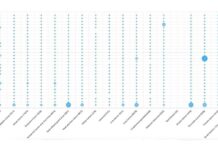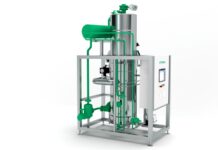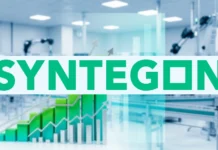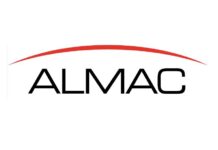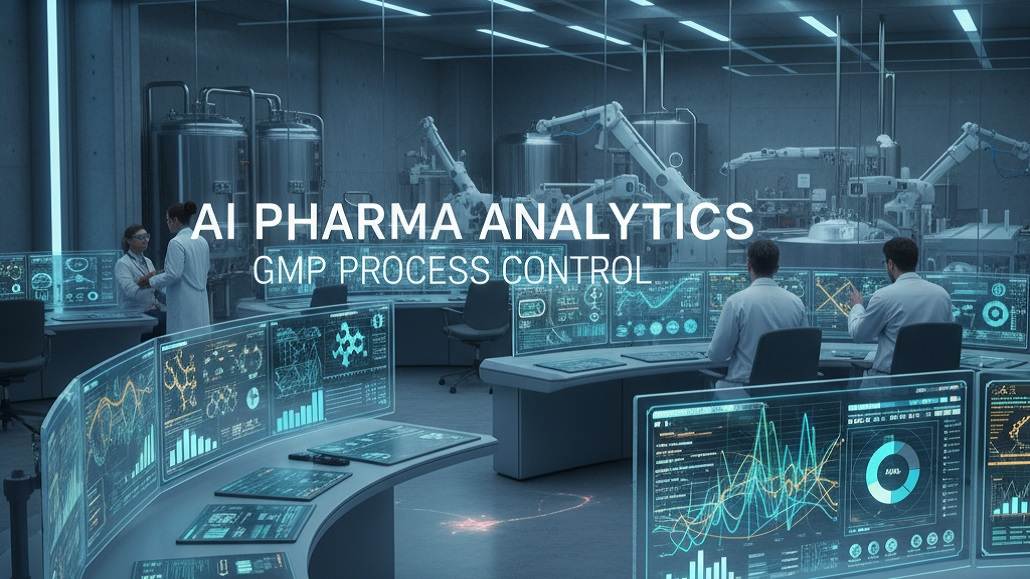Artificial Intelligence in Pharmaceutical Process Control: What’s Now and What’s Next
The pharmaceutical manufacturing landscape is undergoing a transformative revolution as artificial intelligence in pharmaceutical process control emerges as a cornerstone technology for next-generation production facilities. Industry leaders are witnessing unprecedented opportunities to enhance manufacturing efficiency, ensure regulatory compliance, and accelerate the delivery of life-saving medications through intelligent automation systems. The integration of AI technologies into process control systems represents more than incremental improvement; it signifies a fundamental shift toward predictive, adaptive manufacturing that can respond dynamically to changing conditions and optimize operations in real-time.
Modern pharmaceutical manufacturing facilities generate enormous volumes of data from sensors, control systems, and quality monitoring equipment. This data wealth, when combined with advanced AI algorithms, creates opportunities for insights that were previously impossible to obtain. Pharmaceutical companies are discovering that AI in pharma manufacturing can reduce production costs by up to 25% while simultaneously improving product quality and regulatory compliance. The convergence of artificial intelligence, machine learning, and traditional process control is creating smart pharma automation systems that can predict equipment failures, optimize batch outcomes, and ensure consistent product quality across manufacturing campaigns.
Current State of AI in Process Control
Predictive Analytics and Real-Time Optimization
The implementation of predictive analytics in pharmaceutical manufacturing has revolutionized how companies approach process optimization and quality control. Advanced machine learning algorithms analyze historical production data, real-time sensor measurements, and environmental factors to predict optimal operating conditions for each manufacturing campaign. These systems continuously learn from new data, improving their predictive capabilities and enabling manufacturers to achieve higher yields and more consistent product quality.
Pfizer’s implementation of AI-powered manufacturing processes demonstrates the transformative potential of these technologies. The company’s generative AI platform has increased manufacturing throughput by 20% while enabling operators to detect anomalies and implement corrective actions in real-time. Their mRNA prediction algorithm delivered 20,000 additional vaccine doses per batch during COVID-19 vaccine production, showcasing how AI can dramatically impact production efficiency during critical situations.
Real-time process optimization through AI enables dynamic adjustment of manufacturing parameters based on current conditions and predicted outcomes. These systems can automatically modify temperature profiles, mixing speeds, and feed rates to maintain optimal product quality while maximizing productivity. The ability to make these adjustments continuously throughout production campaigns results in more consistent batches and reduced variability.
Digital Process Control Systems
Industry 4.0 pharma manufacturing incorporates sophisticated digital process control systems that integrate multiple data sources and analytical capabilities. These systems combine traditional process instrumentation with advanced sensors, IoT devices, and cloud-based analytics platforms to create comprehensive monitoring and control networks. The integration enables unprecedented visibility into manufacturing operations and supports data-driven decision-making at all levels of the organization.
Advanced process control applications utilize AI methods to develop predictive models that can anticipate process behavior and recommend optimal control actions. These systems analyze real-time sensor data in combination with historical trends to identify patterns that indicate potential deviations from desired performance. The predictive capability allows operators to implement corrective measures before problems develop, preventing quality issues and production disruptions.
Machine learning algorithms enhance traditional control strategies by identifying complex relationships between process variables that may not be apparent through conventional analysis methods. These insights enable the development of more sophisticated control strategies that can maintain process performance within tighter specifications while accommodating normal operational variations.
Advanced Manufacturing Technologies
Smart Automation and Robotics Integration
The evolution of smart pharma automation encompasses both physical automation systems and intelligent software applications that work together to optimize manufacturing operations. Robotic systems equipped with AI capabilities can perform complex tasks such as sample preparation, quality testing, and materials handling with greater precision and consistency than manual operations. These automated systems reduce human error, improve workplace safety, and enable 24/7 production capabilities.
GSK’s implementation of robotic sample preparation in their analytical laboratories demonstrates how automation can improve both efficiency and data quality. The robotic systems reduce ergonomic impact on laboratory personnel while improving traceability and reducing investigation requirements due to human errors. These improvements translate directly into faster product release times and reduced operational costs.
Intelligent scheduling systems represent another critical component of smart manufacturing infrastructure. These systems use AI algorithms to optimize production schedules, considering equipment availability, material constraints, and demand forecasting. The real-time optimization capability enables manufacturers to respond quickly to changing market conditions while maintaining efficient resource utilization.
Internet of Things and Sensor Networks
The proliferation of IoT devices and advanced sensor networks creates the data foundation necessary for effective AI implementation in pharmaceutical manufacturing. Modern production facilities deploy hundreds or thousands of sensors that monitor everything from equipment vibration and temperature to environmental conditions and material properties. This comprehensive monitoring capability provides the data richness required for sophisticated AI algorithms to identify patterns and make accurate predictions.
Wireless sensor networks offer particular advantages in pharmaceutical manufacturing environments where traditional wired installations may be challenging or costly to implement. These systems can monitor equipment conditions continuously without requiring extensive infrastructure modifications. The data collected from these sensors enables predictive maintenance programs that can prevent equipment failures and minimize unplanned downtime.
Edge computing technologies allow for real-time data processing at the point of collection, reducing latency and enabling immediate responses to changing conditions[98]. This distributed processing approach is particularly valuable for time-sensitive control applications where delays in data transmission could impact product quality or process safety.
Machine Learning Applications
Process Optimization and Quality Control
Machine learning applications in pharmaceutical process control focus primarily on optimizing manufacturing parameters and ensuring consistent product quality. Supervised learning algorithms analyze relationships between process inputs and product quality attributes to develop predictive models that can guide operator decisions and automated control systems. These models continuously improve as additional production data becomes available, creating increasingly accurate predictions over time.
Unsupervised learning techniques identify hidden patterns in manufacturing data that may indicate emerging quality issues or opportunities for process improvement. These algorithms can detect subtle changes in process behavior that might not be apparent through traditional monitoring methods. The early detection capability enables proactive interventions that prevent quality problems before they affect product release.
Deep learning models handle complex, multi-dimensional datasets that characterize modern pharmaceutical manufacturing processes. These sophisticated algorithms can identify intricate relationships between dozens of process variables and quality attributes, enabling more precise control strategies than traditional approaches. The enhanced understanding of process behavior supports both routine manufacturing operations and troubleshooting activities.
Predictive Maintenance and Equipment Health
AI-powered predictive maintenance programs utilize machine learning algorithms to analyze equipment condition data and predict when maintenance interventions will be required. These systems monitor vibration signatures, temperature profiles, and other equipment health indicators to identify degradation patterns before failures occur. The proactive approach minimizes unplanned downtime while optimizing maintenance resource allocation.
Condition monitoring systems equipped with AI capabilities can differentiate between normal operational variations and developing equipment problems. This discrimination capability reduces false alarms while ensuring that genuine issues receive immediate attention. The improved accuracy of equipment health assessments supports more effective maintenance scheduling and spare parts inventory management.
Equipment failure prediction models consider multiple factors including operational history, environmental conditions, and current performance indicators. These comprehensive models provide more accurate predictions than simpler approaches based solely on time-based maintenance schedules. The enhanced prediction accuracy enables maintenance teams to optimize their activities while minimizing disruption to production schedules.
Regulatory Compliance and Validation
GMP Integration and Documentation
The integration of AI technologies into pharmaceutical manufacturing must comply with stringent Good Manufacturing Practice requirements and regulatory expectations. Validation of AI systems requires comprehensive documentation of algorithm development, training data sources, and performance verification activities. Regulatory agencies are developing guidance documents that address the unique aspects of AI system validation in pharmaceutical manufacturing environments.
Automated documentation systems support regulatory compliance by maintaining comprehensive records of all manufacturing activities and AI system decisions. These systems create audit trails that demonstrate how AI algorithms reached specific conclusions and what actions were taken based on those recommendations. The detailed documentation supports regulatory inspections and provides evidence of appropriate oversight and control.
Data integrity requirements for AI systems encompass both the algorithms themselves and the data used for training and operation. Manufacturers must demonstrate that AI systems operate consistently and reliably over time, with appropriate controls to prevent unauthorized modifications or data manipulation. The validation approach must address the unique characteristics of machine learning systems that can change behavior as they process new data.
Validation Strategies for AI Systems
Computer system validation principles apply to AI systems with additional considerations for algorithm transparency and performance verification. Validation protocols must demonstrate that AI systems perform as intended across the full range of expected operating conditions. The validation approach should include both retrospective analysis of development activities and prospective verification of system performance.
Risk-based validation strategies focus validation efforts on the most critical aspects of AI system functionality. These approaches consider factors such as patient safety impact, product quality implications, and regulatory expectations to determine appropriate validation scope and rigor. The risk assessment process should be documented and reviewed regularly as system capabilities and applications evolve.
Change control procedures for AI systems must address the unique characteristics of machine learning algorithms that can modify their behavior through continued learning. These procedures should define how algorithm changes will be evaluated, approved, and documented. The change control process should ensure that system performance remains within validated parameters as algorithms adapt to new data.
Future Trends and Innovations
Generative AI and Advanced Analytics
Generative AI technologies represent the next frontier in pharmaceutical process control applications. These advanced systems can create new process recipes, optimize formulation parameters, and generate novel solutions to manufacturing challenges. The creative capability of generative AI extends beyond traditional optimization approaches by exploring entirely new operational strategies that human operators might not consider.
Large language models are being adapted for pharmaceutical manufacturing applications where they can process complex technical documentation and provide intelligent recommendations to operators. These systems can analyze standard operating procedures, batch records, and troubleshooting guides to provide contextual assistance during manufacturing operations. The natural language processing capability enables more intuitive human-machine interactions.
Advanced analytics platforms integrate multiple AI technologies to provide comprehensive manufacturing intelligence. These platforms combine predictive modeling, natural language processing, and automated reasoning to deliver actionable insights that support both routine operations and strategic decision-making. The integrated approach provides more comprehensive understanding than individual AI applications operating in isolation.
Digital Twin Integration
Digital twin technology creates virtual representations of manufacturing processes that enable simulation and optimization activities without disrupting actual production. These systems integrate real-time process data with mechanistic models and AI algorithms to predict system behavior under various operating scenarios. The simulation capability supports process development, operator training, and troubleshooting activities.
The integration of AI algorithms with digital twin platforms enhances their predictive capabilities and enables more sophisticated optimization strategies. Machine learning models can identify optimal operating conditions within the digital environment before implementing changes in actual manufacturing systems. This approach reduces the risk associated with process modifications and accelerates optimization activities.
Real-time digital twins maintain continuous synchronization with physical manufacturing systems, enabling immediate detection of deviations from expected performance. These systems can automatically trigger corrective actions or alert operators when process behavior diverges from predicted patterns. The real-time capability supports both automated control applications and human decision-making processes.
Autonomous Manufacturing Systems
The evolution toward autonomous manufacturing systems represents the ultimate application of AI in pharmaceutical process control. These systems combine multiple AI technologies to create manufacturing environments that can operate with minimal human intervention while maintaining high standards of quality and compliance. The autonomous capability includes process optimization, quality control, maintenance scheduling, and regulatory documentation.
Fully autonomous systems incorporate advanced decision-making algorithms that can evaluate complex situations and select appropriate responses without human guidance. These systems must demonstrate robust performance across a wide range of operating conditions while maintaining appropriate safety margins and regulatory compliance. The development of autonomous systems requires extensive validation and risk assessment activities.
Human oversight remains essential even in autonomous manufacturing environments, with AI systems designed to enhance rather than replace human expertise. The optimal integration of human and artificial intelligence creates hybrid systems that leverage the strengths of both approaches. These collaborative systems provide the flexibility to handle unusual situations while maintaining the consistency and efficiency of automated operations.
The transformation of pharmaceutical manufacturing through artificial intelligence represents one of the most significant technological advances in the industry’s history. Current applications demonstrate substantial benefits in terms of efficiency, quality, and cost reduction, while emerging technologies promise even greater capabilities. Success in implementing these technologies requires careful attention to regulatory requirements, systematic validation approaches, and appropriate integration with existing manufacturing systems. Organizations that successfully navigate these challenges will establish competitive advantages through enhanced manufacturing capabilities and improved product quality, ultimately benefiting patients through more reliable access to high-quality medications.









